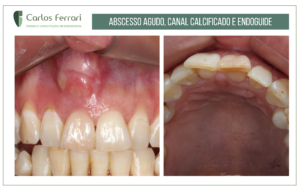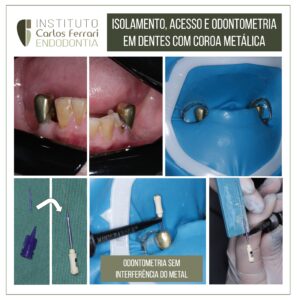Perfuração radicular e reabsorção radicular externa.
Paciente encaminhada por colega, com queixa de fístula na gengiva anterior superior, com histórico de tratamento com um outro colega, em que o paciente relatou ter havido uma perfuração durante o tratamento. No exame clínico, nada digno de nota além da confirmação da queixa principal. O exame radiográfico revelou o processo inflamatório causador na região periapical.
Na primeira consulta, preparo com Hipoclorito 2,5%, PUI, PDT e medicação com Bio C Temp (Angelus). Na segunda consulta, após 20 dias, observou-se remissão da fístula e ausência de qualquer sinal ou sintoma. Optou-se então pelo fechamento prévio da perfuração com Bio C Repair (Angelus) e posterior obturação do canal radicular.
O paciente foi esclarecido sobre riscos e alternativas em caso de insucesso, cujo tratamento seguinte seria a cirurgia paraendodôntica.
In: Candeiro et al. Research, Society and Development, v. 11, n. 2, e8911225474, 2022:
Durante as etapas do tratamento endodôntico acidentes e complicações podem ocorrer, o que na maioria das vezes a
sua resolução pode representar um desafio para o clínico (Gonzalez, 1990). A perfuração radicular é um acidente caracterizado
pela comunicação entre o espaço pulpar ou canal radicular com os tecidos periodontais de sustentação do elemento dentário.
Este tipo de complicação pode acontecer em virtude de cáries extensas, reabsorções radiculares ou ainda devido ao uso
incorreto de brocas e outros instrumentos endodônticos (Alrahabi et al., 2019).
A presença de nódulos pulpares, calcificações, canais com curvaturas, experiência do operador e mal posicionamento
dentário são os principais fatores predisponentes para a ocorrência de perfurações radiculares iatrogênicas (Estrela et al., 2017,
2018; Evans, 2021). As perfurações radiculares iatrogênicas ocorrem em aproximadamente 2% a 12% dos dentes tratados
endodonticamente (Tsesis et al., 2010; Tsesis & Fuss, 2006) e o prognóstico nestes casos depende do tamanho, localização e
tempo de ocorrência da perfuração (Z. Fuss & Trope, 1996). Seltzer et al. avaliaram perfurações radiculares acidentais em
macacos que foram tratadas imediatamente ou após vários intervalos de tempo. Os fatores mais importantes que influenciaram
a cura foram o tempo entre a ocorrência da perfuração e o fechamento, assim como a localização da perfuração (Seltzer et al.,
1970).
O tratamento das perfurações radiculares requer o uso de materiais biocompatíveis, que sejam inertes ou de
preferência que induzam a reparação tecidual. Nesse contexto, o agregado trióxido mineral (MTA) tem sido tradicionalmente
considerado a primeira escolha para o reparo de perfurações radiculares (Tawil et al., 2015). O MTA possui
biocompatibilidade, boa capacidade de selamento e liberação de íons cálcio, sendo propriedades físicas e biológicas que
favorecem o uso em casos de perfuração radicular (Dawood et al., 2017). Como desvantagens, o MTA possui uma difícil
manipulação e inserção, além da possibilidade de escurecimento da estrutura dentária.
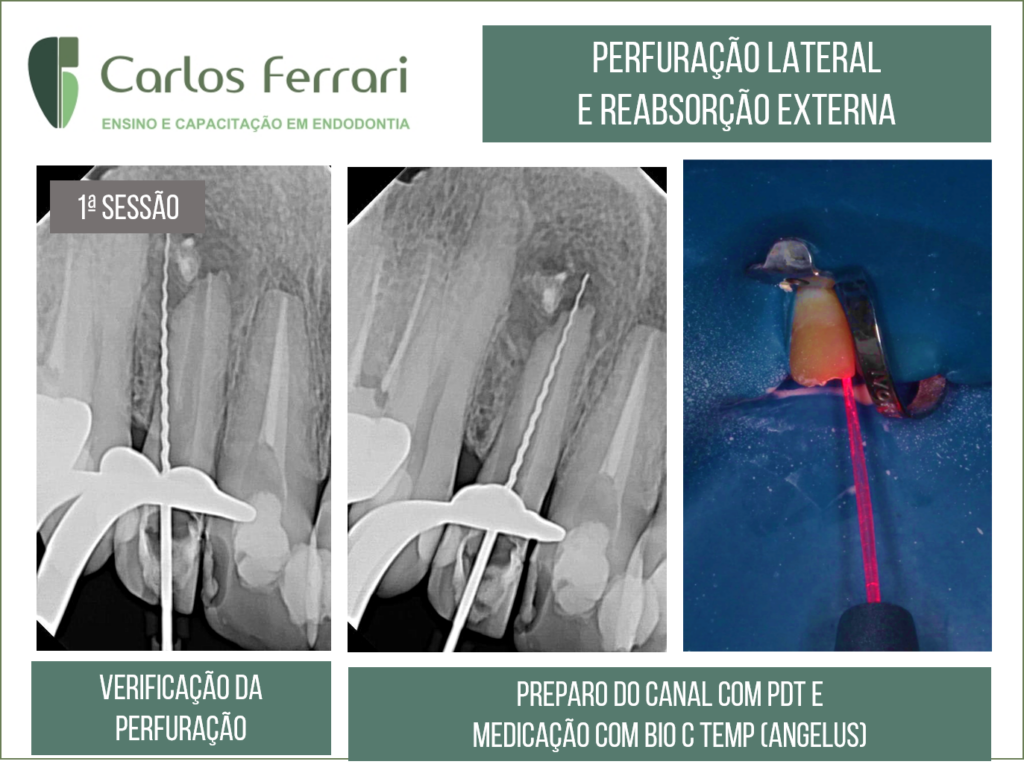
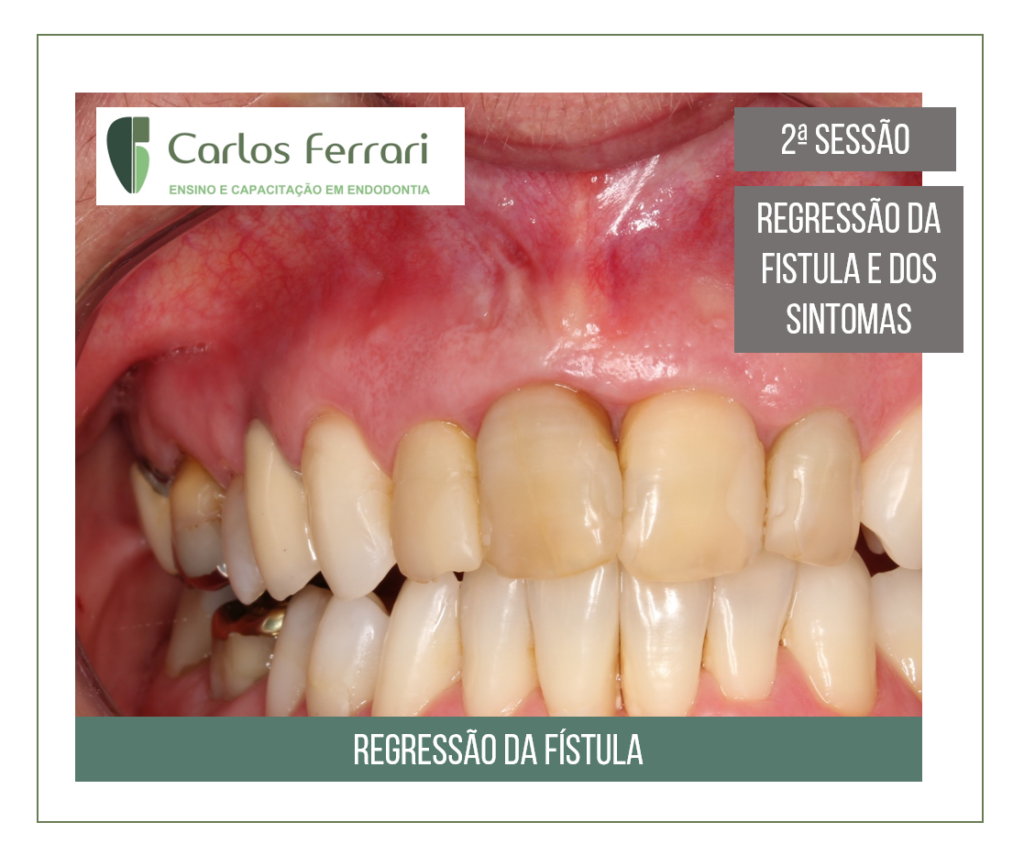

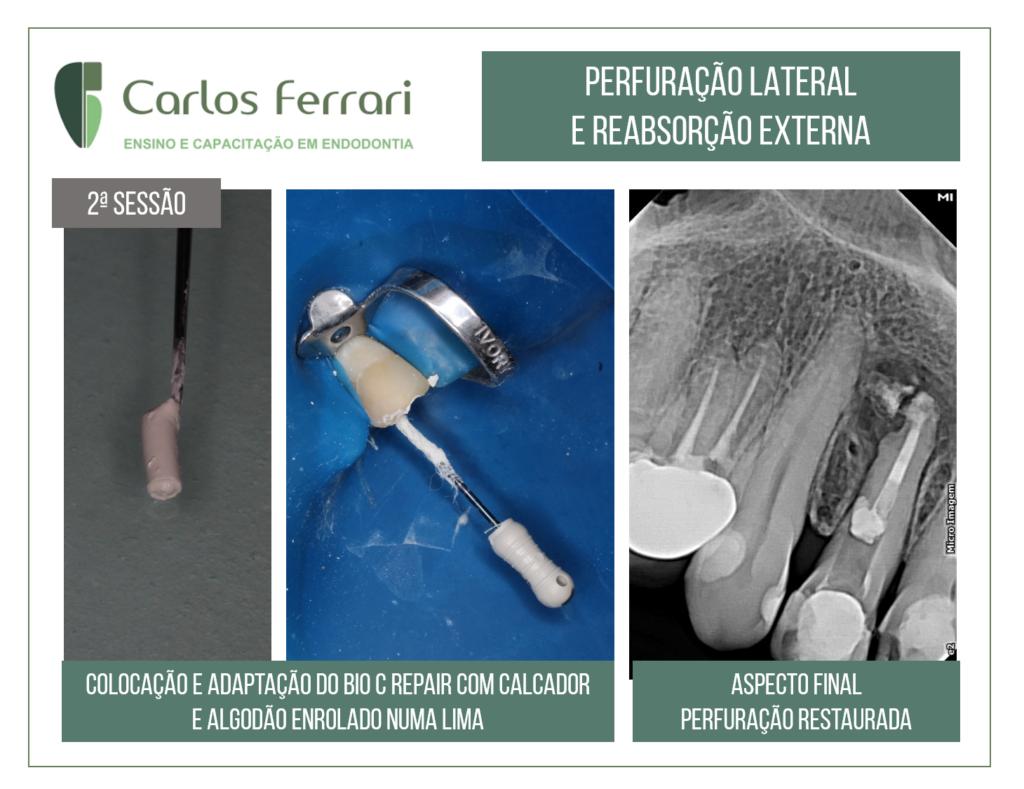
https://ferrariendodontia.com.br/cirurgia-paraendodontica-3/



